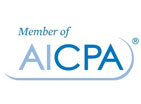 Even well-run companies experience down years. The federal tax code may allow a bright strategy to lighten the impact. Certain losses, within limits, may be used to reduce taxable income in later years.
Even well-run companies experience down years. The federal tax code may allow a bright strategy to lighten the impact. Certain losses, within limits, may be used to reduce taxable income in later years.
Who qualifies?
The net operating loss (NOL) deduction levels the playing field between businesses with steady income and those with income that rises and falls. It lets businesses with fluctuating income to average their income and losses over the years and pay tax accordingly.
You may be eligible for the NOL deduction if your deductions for the tax year are greater than your income. The loss generally must be caused by deductions related to your:
- Business (Schedules C and F losses, or Schedule K-1 losses from partnerships or S corporations),
- Casualty and theft losses from a federally declared disaster, or
- Rental property (Schedule E).
The following generally aren’t allowed when determining your NOL:
- Capital losses that exceed capital gains,
- The exclusion for gains from the sale or exchange of qualified small business stock,
- Nonbusiness deductions that exceed nonbusiness income,
- The NOL deduction itself, and
- The Section 199A qualified business income deduction.
Individuals and C corporations are eligible to claim the NOL deduction. Partnerships and S corporations generally aren’t eligible, but partners and shareholders can use their separate shares of the business’s income and deductions to calculate individual NOLs.
What are the changes and limits?
Before the Tax Cuts and Jobs Act (TCJA), NOLs could be carried back two years, forward 20 years, and offset up to 100% of taxable income. The TCJA changed the landscape:
- Carrybacks are eliminated (except certain farm losses).
- Carryforwards are allowed indefinitely.
- The deduction is capped at 80% of taxable income for the year.
If an NOL carryforward exceeds your taxable income of the target year, the unused balance may become an NOL carryover. Multiple NOLs must be applied in the order they were incurred.
What’s the excess business loss limitation?
The TCJA established an “excess business loss” limitation, which took effect in 2021. For partnerships and S corporations, this limitation is applied at the partner or shareholder level, after the outside basis, at-risk, and passive activity loss limitations have been applied.
Under the rule, noncorporate taxpayers’ business losses can offset only business-related income or gain, plus an inflation-adjusted threshold. For 2025, that threshold is $313,000 ($626,000 if married filing jointly). Remaining losses are treated as an NOL carryforward to the next tax year. In other words, you can’t fully deduct them because they become subject to the 80% income limitation on NOLs, reducing their tax value.
Important: Under the Inflation Reduction Act, the excess business loss limitation applies to tax years through 2028. Under the TCJA, it had been scheduled to expire after December 31, 2026.
Plan proactively
Navigating NOLs and the related restrictions is complex, especially when coordinating with other deductions and credits. Thoughtful planning can maximize the benefit of past losses. Please consult with us about how to proceed in your situation.
For more information on the above article or any business tax services, contact Lesley L. Price, CPA, by calling (334) 887-7022 or by leaving us a message below.







